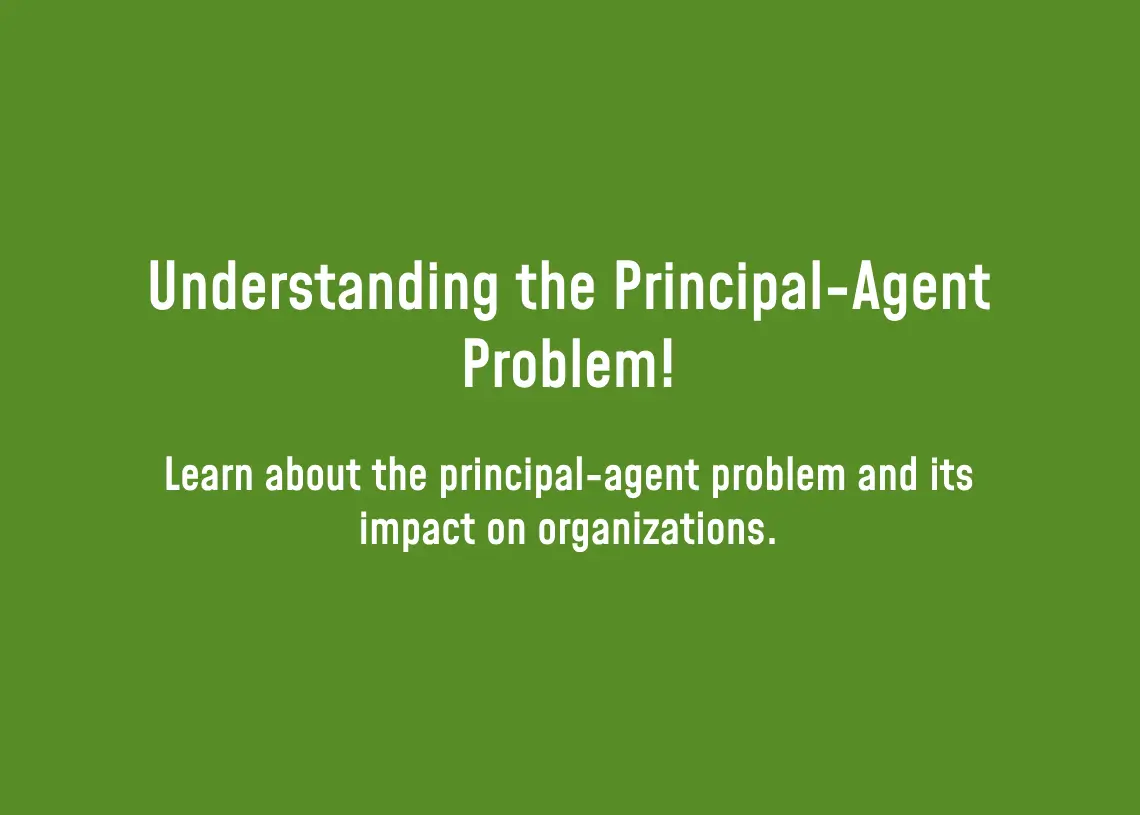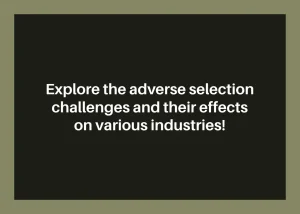The Principal-Agent problem is a widely studied phenomenon in economics and management that arises when an agent, acting on behalf of a principal, has different incentives and interests than the principal. This misalignment of interests can lead to a divergence in goals, values, and outcomes, which ultimately affects the performance of the organization. The problem is particularly relevant in contexts where the principal cannot directly observe or monitor the agent’s actions, such as in corporate governance, political institutions, and public policy.
To understand the principal-agent problem, we need to delve into the underlying economic theory and the practical implications of this issue. In this blog post, we will explore the key concepts and theories that underpin the principal-agent problem, including moral hazard, adverse selection, and agency costs. We will also examine the different approaches and strategies that organizations can use to mitigate the principal-agent problem, such as incentive alignment, monitoring, and delegation.
Earn a certificate in your dream career for an affordable price at IAP Career College today!
Principal-Agent Problem: A Definition
The principal-agent problem is a term used in economics and business management to describe a common issue that arises when one party, known as the principal, hires another party, known as the agent, to carry out a task on their behalf.
The problem is that the interests of the principal and the agent may not always align, and the agent may have incentives to act in their own self-interest rather than in the best interest of the principal. This misalignment of interests can lead to a variety of issues, including moral hazard, adverse selection, and agency costs.
Understanding the principal-agent problem is essential for organizations to minimize the risks associated with delegation and to design effective incentive structures to encourage agents to act in the best interest of the principal.
Asymmetric Information and Incentives
The principal-agent problem refers to the conflict of interest that arises between two parties – the principal and the agent – due to information asymmetry and differing incentives. In this context, information asymmetry refers to situations where the agent possesses more information about a task than the principal does.
This may lead to moral hazard, where the agent may take actions that benefit them at the expense of the principal. Incentives, on the other hand, refer to the rewards or penalties offered to the agent for their performance.
These can either align or conflict with the goals of the principal. To address the principal-agent problem, it is important to establish clear communication, design appropriate incentive structures, and monitor the agent’s performance closely.
Effects of Moral Hazard
The principal-agent problem, also known as the agency problem, is a situation that arises when a principal hires an agent to perform a task but is unable to fully monitor the agent’s actions. This situation can create a moral hazard, where the agent may take actions that benefit themselves at the expense of the principal.
The effects of moral hazard can be seen in a variety of situations, including financial markets and insurance. For example, a bank may offer loans to individuals with poor credit ratings, knowing that they are likely to default on the loan.
This is because the bank can then sell the loan to another institution, transferring the risk to a third party. In this scenario, the bank is taking advantage of the moral hazard created by the principal-agent problem. To mitigate the effects of moral hazard, principals can use mechanisms such as performance-based incentives and monitoring to align the interests of the agent with their own.
Agency Costs and Control Mechanisms
Agency costs and control mechanisms are essential concepts in understanding the principal-agent problem in corporate finance. The principal-agent problem is a pervasive issue that arises when the interests of the principal (shareholders) and the agent (management) do not align.
This misalignment of interests can lead to agency costs, which refer to the costs incurred by the principal to monitor and control the actions of the agent. Control mechanisms, such as the use of performance-based incentives and monitoring mechanisms, are commonly used to mitigate agency costs.
However, these mechanisms are not without their drawbacks, such as the possibility of inducing unintended behaviors or increasing the complexity of the monitoring process. Therefore, it is important for companies to strike a balance between control mechanisms and agency costs to ensure the most efficient allocation of resources and the maximization of shareholder value.
Types of Agency Relationships
The principal-agent problem is a common issue in business and economics. It describes the potential conflict of interest that can arise between a principal and an agent when the principal hires the agent to act on their behalf. In order to mitigate this problem, it is important to understand the types of agency relationships.
There are five main types of agency relationships: universal, general, special, agency coupled with an interest, and sub-agency. A universal agency relationship gives the agent the power to act on behalf of the principal in all matters, while a general agency relationship limits the agent’s power to a specific area or type of business.
A special agency relationship grants the agent power to undertake specific tasks or actions on behalf of the principal. An agency coupled with an interest occurs when the agent has a vested interest in the outcome of the principal’s affairs.
Finally, sub-agency occurs when an agent appoints another agent to carry out specific tasks on their behalf. Understanding these types of agency relationships is crucial for avoiding conflicts of interest and ensuring that both the principal and agent are able to act in good faith and with clear expectations.
Principal-Agent Problem in Business
The Principal-Agent Problem, also known as the agency problem, is a major issue in business that affects the relationship between a principal and an agent. The principal-agent problem arises when the interests of the principal and the agent diverge, and the agent has an incentive to act in their own self-interest rather than in the interests of the principal.
This problem is particularly prevalent in situations where the agent has more information than the principal and is therefore in a better position to make decisions. The principal-agent problem can occur in many different types of business relationships, such as between shareholders and managers, between owners and employees, or between clients and service providers.
Understanding the principal-agent problem is crucial for businesses to be able to identify and mitigate potential conflicts of interest and ensure that both parties are working towards the same goals.
Government and Regulatory Agencies
In the context of the principal-agent problem, government and regulatory agencies play a crucial role in ensuring that agents act in the best interest of principals. These agencies are responsible for monitoring and enforcing laws and regulations that govern the behavior of agents.
They have the authority to impose penalties on agents who violate these rules, which serves as a deterrent to unethical behavior. In addition, government and regulatory agencies have the power to establish standards and guidelines that agents must follow, which helps to mitigate the information asymmetry between principals and agents.
However, it is important to note that these agencies themselves are not immune to the principal-agent problem. They must balance the interests of various stakeholders, including the public, industry, and government officials, which can create conflicts of interest. Therefore, it is important for these agencies to have strong governance structures and accountability mechanisms in place to ensure that they act in the best interest of the public.
Principal-Agent Problem in Politics
The Principal-agent problem is a fundamental issue in politics and public administration that occurs when a principal hires an agent to carry out a task but cannot fully monitor the agent’s behavior. In this scenario, the agent may have incentives to act in their own interest rather than the principal’s interests.
This can lead to agency costs, including moral hazard and adverse selection, which can be detrimental to the principal. For instance, politicians who are elected to serve the public may prioritize their personal interests, such as getting re-elected or securing donations from special interest groups, rather than working towards the common good. Understanding the Principal-agent problem is essential for policymakers to ensure that public officials act in the public interest and to maintain the accountability of those in power.
Managing Principal-Agent Relationships
The principal-agent problem is a common issue in the world of business and economics, where the interests of principals and their agents may not align. In many cases, principals delegate decision-making authority to agents who then act on their behalf.
The challenge arises when the agents prioritize their own interests over the principals’ interests, leading to adverse effects on the organization’s performance. Managing principal-agent relationships is essential to mitigate this problem.
A key aspect of this is selecting agents who share the same objectives as the principals and aligning incentives to promote cooperation. Furthermore, setting clear expectations, monitoring agent behavior, and ensuring accountability are crucial to maintaining a successful principal-agent relationship.
Effective communication between the principal and agent is also vital to ensure that the agent understands their role and responsibilities and remains aligned with the principal’s interests.
Future of Principal-Agent Problem
The principal-agent problem is a common issue that arises in business relationships, where the principal (employer) delegates tasks to the agent (employee) to act on their behalf. However, the agent may have different objectives and incentives than the principal, leading to a conflict of interest.
As businesses continue to evolve, so does the principal-agent problem. With the rise of remote work and the gig economy, maintaining effective communication and trust between principals and agents becomes increasingly challenging.
In the future, we can expect advances in technology, such as artificial intelligence and blockchain, to provide potential solutions in addressing the principal-agent problem. For instance, smart contracts powered by blockchain technology could establish a mutually agreed-upon set of conditions for an agent’s work, and enforce those conditions automatically, eliminating the need for intermediaries and reducing the potential for conflicts of interest. Overall, understanding and addressing the principal-agent problem is crucial for businesses to maintain healthy and productive relationships between principals and agents.
Conclusion: Understanding the Principal-Agent Problem!
In conclusion, the principal-agent problem poses a significant challenge for businesses and organizations that rely on delegating tasks and decision-making to agents. By understanding the nature of this problem and the factors that contribute to it, organizations can take steps to mitigate the risk of misaligned incentives and improve the overall performance of their agents.
This may involve implementing appropriate monitoring and enforcement mechanisms, designing effective compensation and incentive systems, and promoting a culture of transparency and accountability. Ultimately, addressing the principal-agent problem requires a proactive and strategic approach that takes into account the unique circumstances and objectives of each organization.





